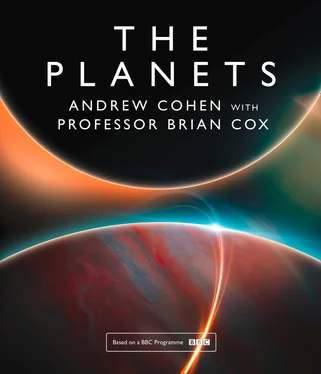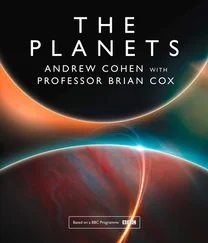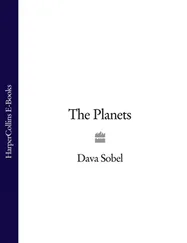For many decades our first and only close-up glimpse of the innermost rock orbiting the Sun came from the Mariner 10 spacecraft, when on three separate occasions in 1974 and 1975 it briefly flew past Mercury. This was the first spacecraft to use another planet to slingshot itself into a different flightpath, using a flyby of Venus to bend its trajectory to allow it to enter an orbit that would bring it near enough to Mercury to photograph it close up. Clad in protection to ensure it could survive the intense solar radiation and immense extremes of temperature, Mariner 10 was able to send back the first detailed images of Mercury as it flew past at just over 200 miles above its surface. It passed by the same sunlit side of Mercury each time, so it was only able to map 40 to 45 per cent of Mercury’s surface.
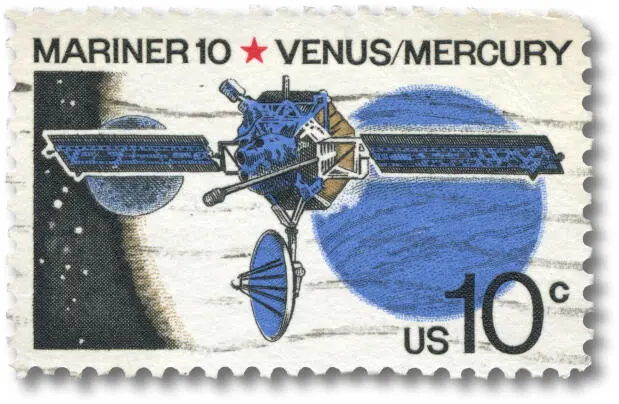
© Shutterstock
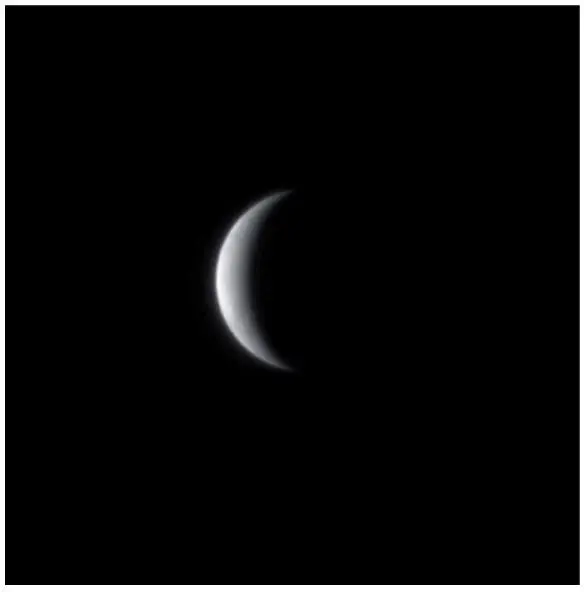
© NASA/Johns Hopkins University Applied Physics Laboratory/Carnegie Institution of Washington
The first glimpse of Mercury from Messsenger, nearly 40 years after Mariner 10’s historic mission.
The spacecraft took over 2,800 photos, which gave us never-before-seen views of the planet’s cratered, Moon-like surface, a surface that we had never previously been able to fully resolve through Earth-based observation. Despite the beauty of the pictures taken, it wasn’t the images from Mariner 10 that really surprised us, it was the data the probe collected relating to Mercury’s geology, which pointed to a much more surprising history of the planet than had previously been imagined. Mercury, it seemed, was far from being just a scorched husk.
Mariner was able to sense the remains of an atmosphere consisting primarily of helium, as well as a magnetic field and a large iron-rich core, opening a mystery that would remain unexplored for another 30 years. As it flew past Mercury for the last time on 16 March 1975, the transmitters were switched off and its contact with Earth silenced. Mission completed, Mariner 10 began a lonely orbit of the Sun that, as far as we know, continues to this day.
‘We have Mercury in our sights.’
MDIS Instrument team, 10.30 am EST, 9 January 2008.
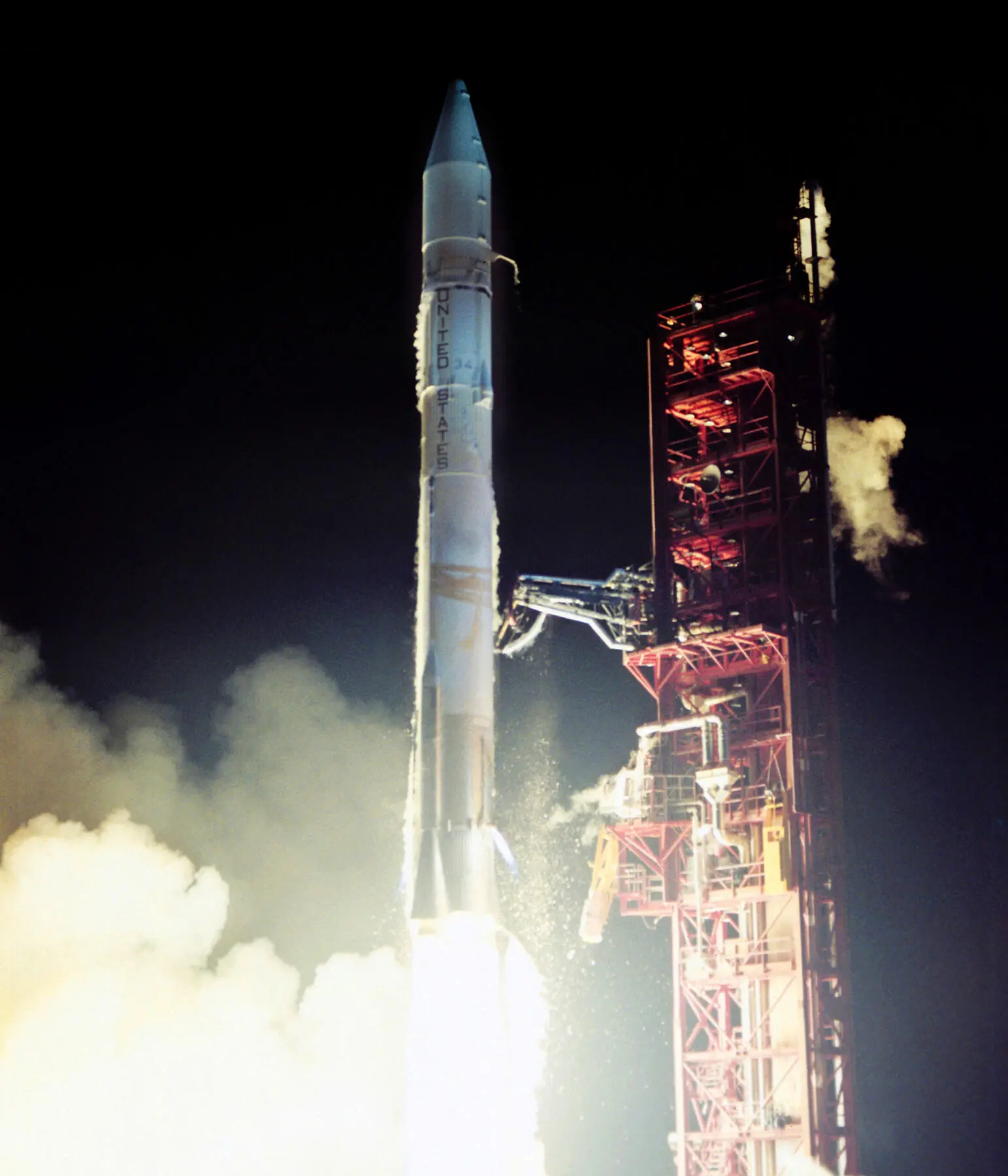
© NASA / SCIENCE PHOTO LIBRARY
Mariner 10, launched on 4 November 1973 from Cape Canaveral, was the first unmanned spacecraft to fly past Mercury, managing to map half of the planet’s surface in the process through over 2,800 photos, and giving us a unique insight into its history and makeup.

© NASA/JPL
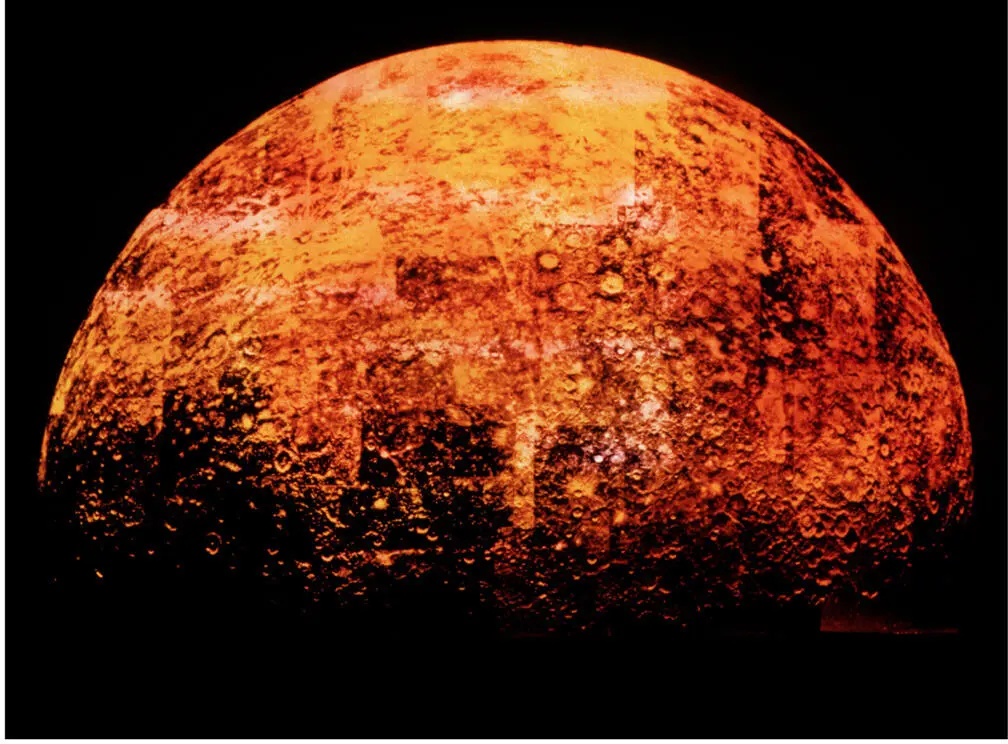
© NASA, COLOURED BY MEHAU KULYK / SCIENCE PHOTO LIBRARY
These images, both in their original glory and false-coloured, clearly show some of the thousands upon thousands of impact craters that make up the surface of Mercury.
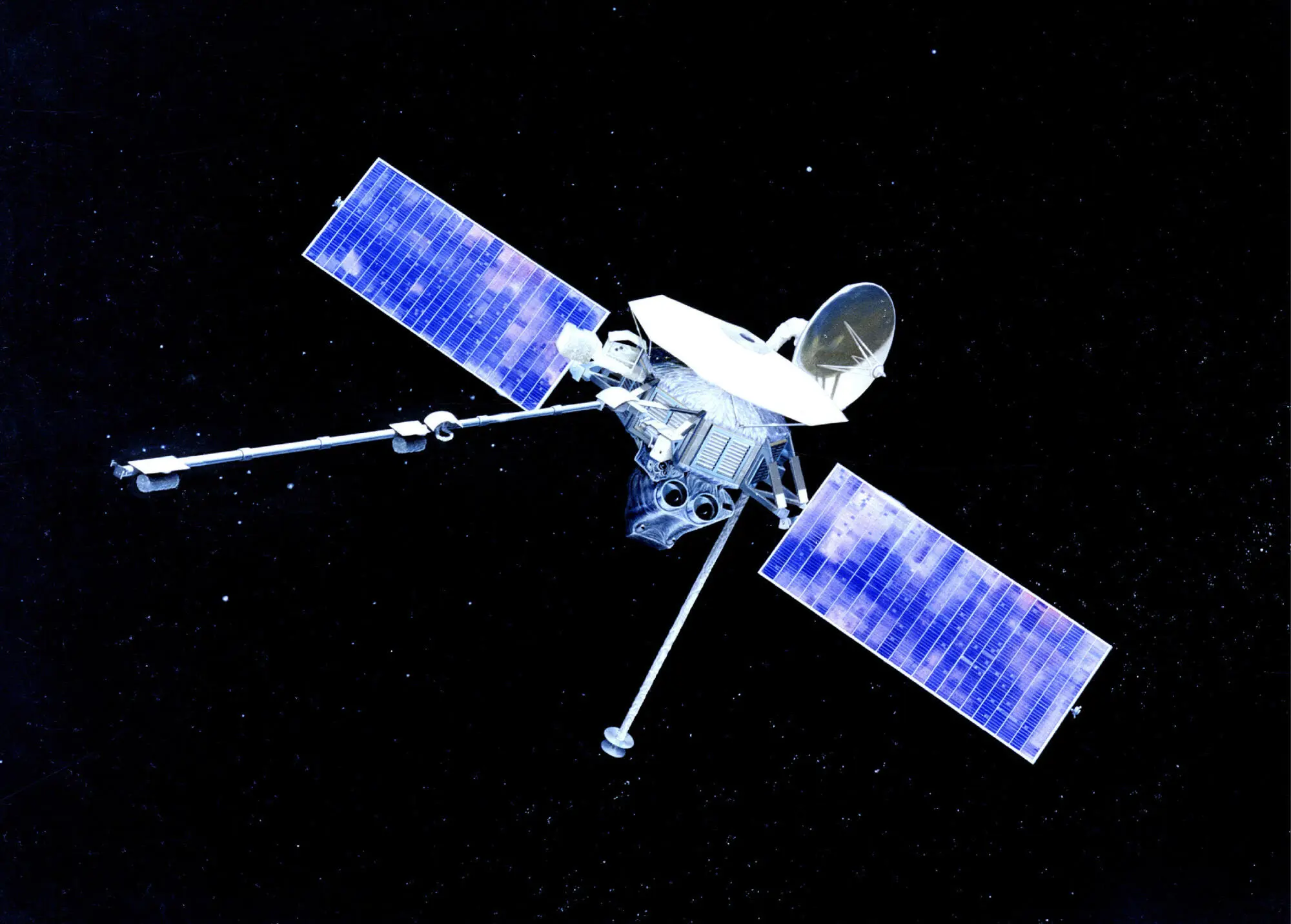
© NASA Wikimedia Commons
This model of Mariner 10 shows the spacecraft in flight. In a highly complex mission, the craft used the gravitational pull of a planet to direct it and large solar panels acted as sails whenever scientists needed to correct Mariner’s course.
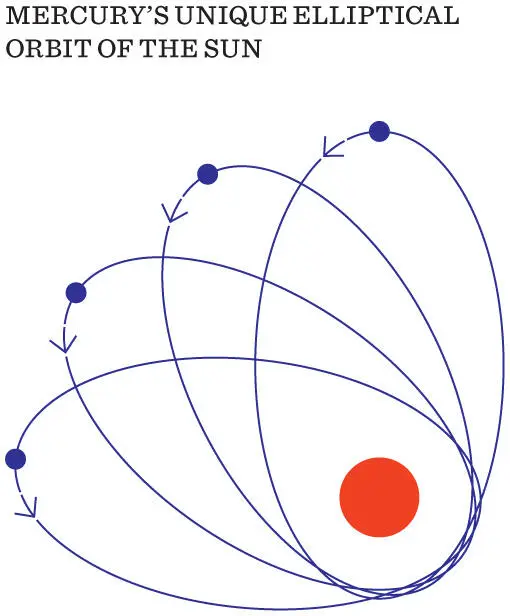
© NASA/Johns Hopkins University Applied Physics Laboratory/Carnegie Institution of Washington
Mercury’s elliptical path around the Sun shifts slightly with each orbit, such that its closest point to the Sun moves forward with each pass. This discovery could not be verified with Newtonian physics and it took Albert Einstein’s theory of relativity to finally explain it.
At first sight many things about Mercury simply don’t make sense. During its 88-day orbit around the Sun it travels in a lopsided, elliptical orbit, which means it can be as far away from the Sun as 70 million kilometres but occasionally as close as 46 million kilometres. This is by far the most irregular of orbits of all the planets, but it is not the end of Mercury’s oddity. Temperatures at midday can rise to 430 degrees Celsius on the surface, but at night, because it’s a small planet and it has no atmosphere, temperatures fall to minus 170 degrees, giving it the greatest temperature swing of any known body in the Solar System. Its rotation is also unusual, gravitationally locked to the Sun in what is known as a 3:2 spin orbital resonance. This means the planet spins precisely three times on its axis for every two orbits, which in turn means that its day is twice as long as its year. In effect, you could be travelling over its surface at walking pace and keep the Sun at the same point in the sky as you strolled through eternal twilight.
As planetary scientist Nancy Chabot explains, ‘A day on Mercury is not like a day on Earth. It has a very unusual orbit … It has to go around the Sun twice to have one complete solar day on the planet, where the Sun goes from directly overhead to directly overhead and this actually takes 176 Earth days.’ Because of the planet’s orbit, there are places on the Mercurian surface where a hypothetical observer would be able to see the (two and a half times larger in the sky) Sun appear to rise and set twice during one Mercurian day. It rises, then arcs across the sky, stops, moves back towards the rising horizon, stops again, and finally restarts its journey towards the setting horizon.
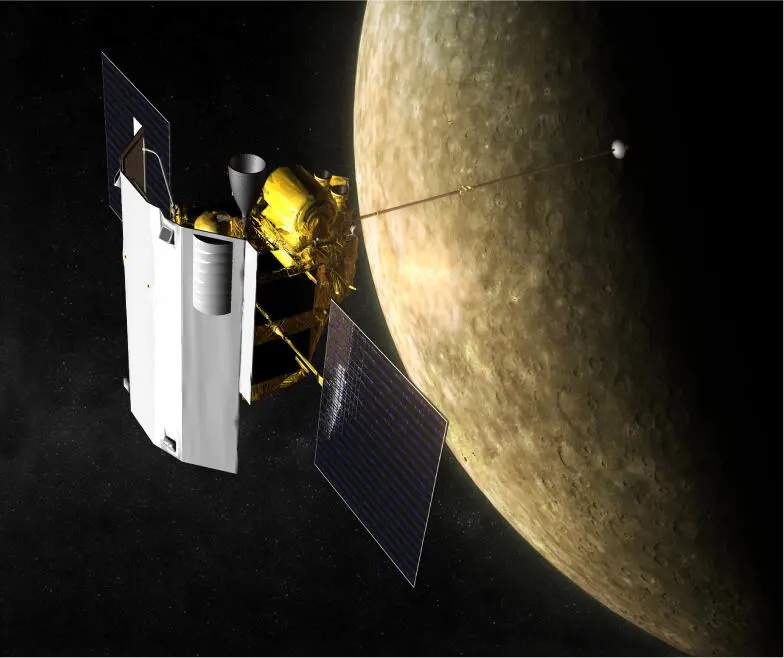
© HarperCollins
At the end of a long, circuitous route, Messenger finally enters Mercury’s orbit on 18 March 2011, the first spacecraft to do so.
‘With the beginning today of the primary science phase of the mission, we will be making nearly continuous observations that will allow us to gain the first global perspective on the innermost planet.’
Sean Solomon, Messenger mission
Most of Mercury’s anomalies can be explained by the orbital mechanics of its journey around the Sun, except, that is, for the odd elliptical orbit that takes it on such an oval-shaped, elongated course. This irregularity has puzzled astronomers for centuries and hints at an ancient planet that was very different from the Mercury we see today.
5 … 4 … 3 Main engines start 2 … 1 … and zero and lift off of Messenger on NASA mission to Mercury … a planetary enigma in our inner solar system
To truly begin to understand Mercury’s history we had to wait nearly 40 years before we could return to her. On 18 March 2011, NASA’s Messenger spacecraft became the first to enter Mercury’s orbit, and over the next four years it succeeded in not only photographing 100 per cent of the planet’s surface, but also collecting extensive data on its geology.
Читать дальше
